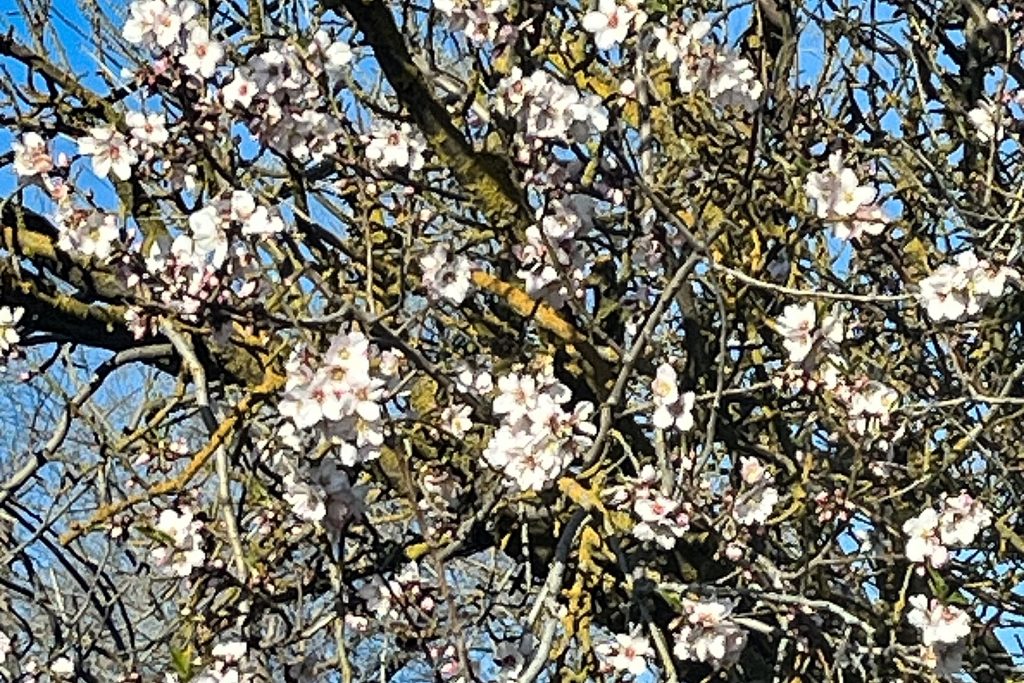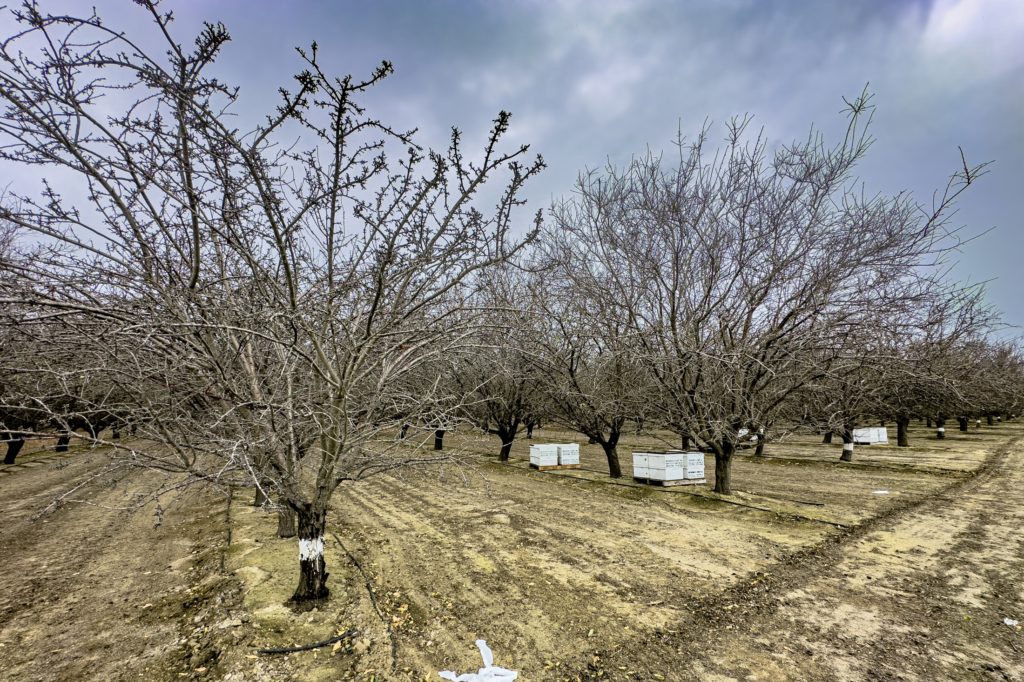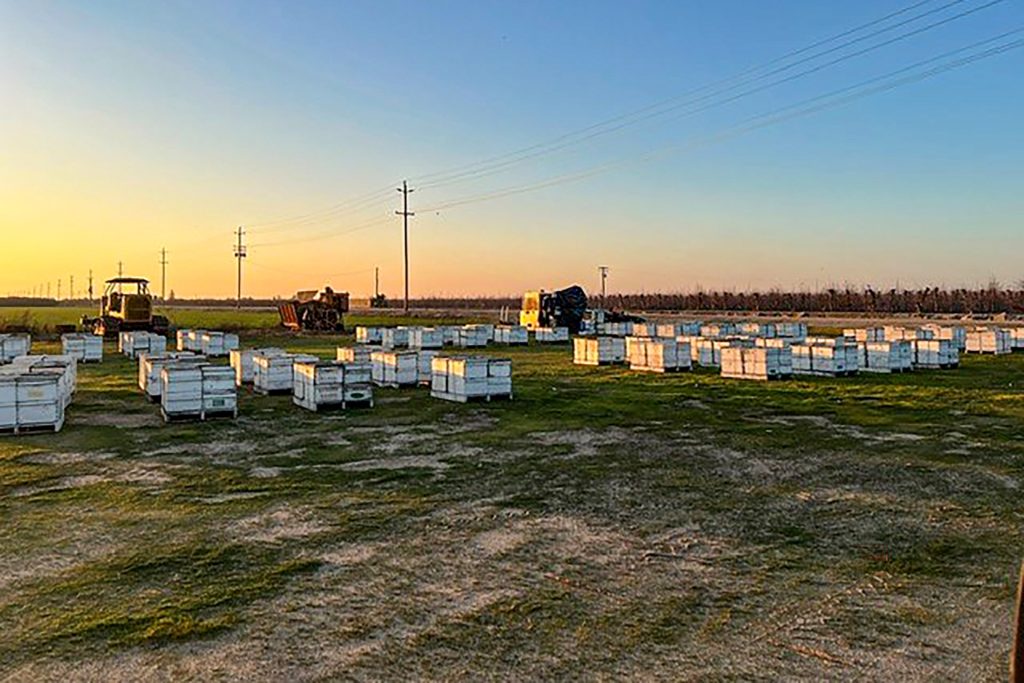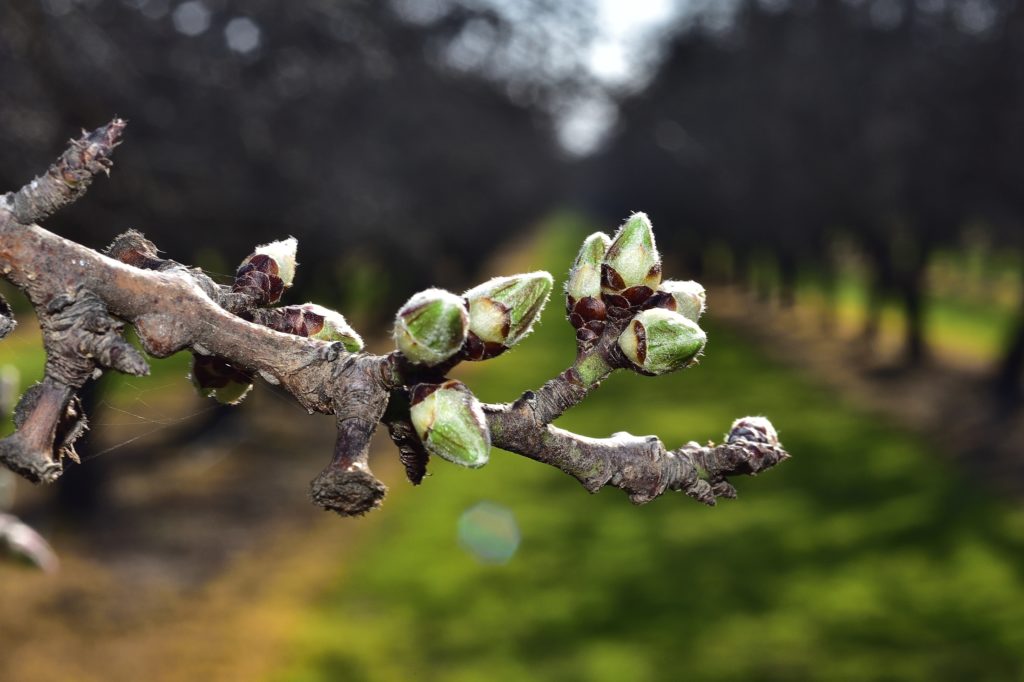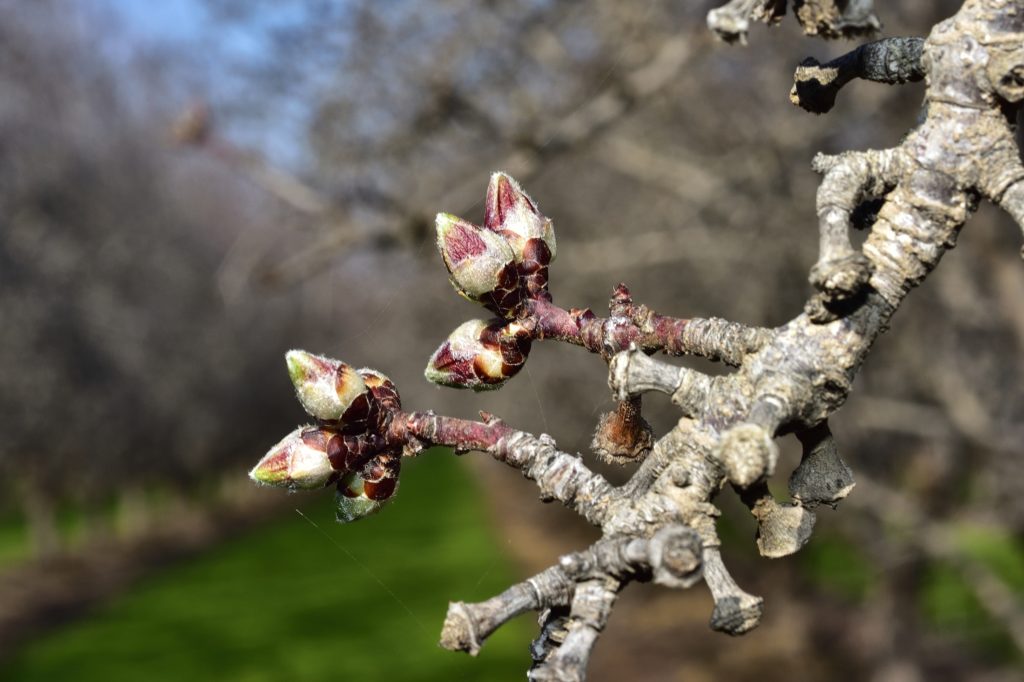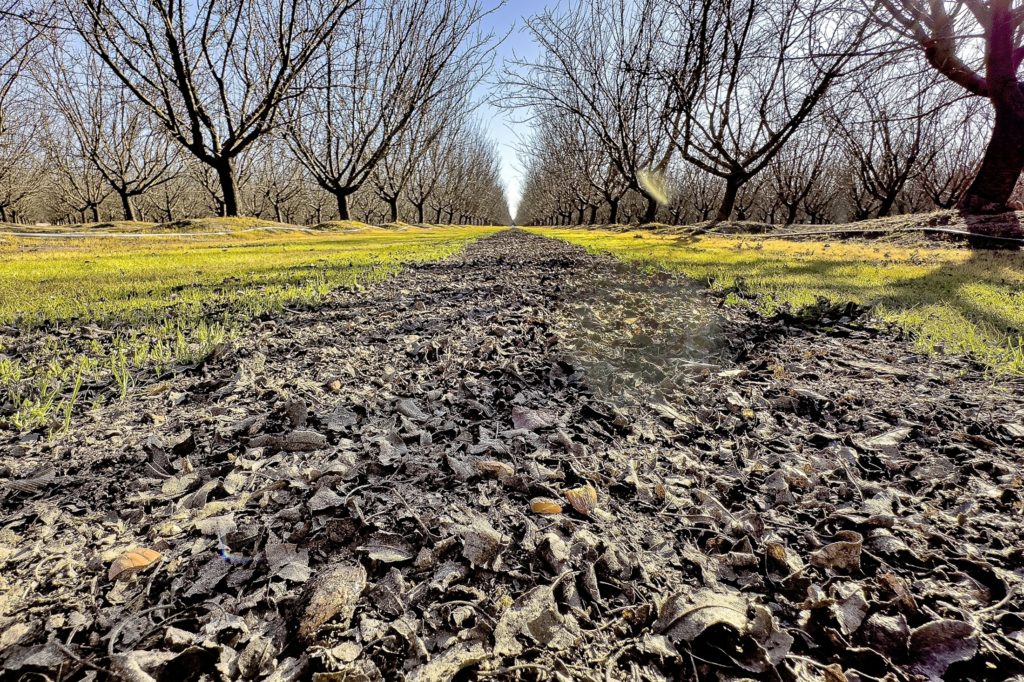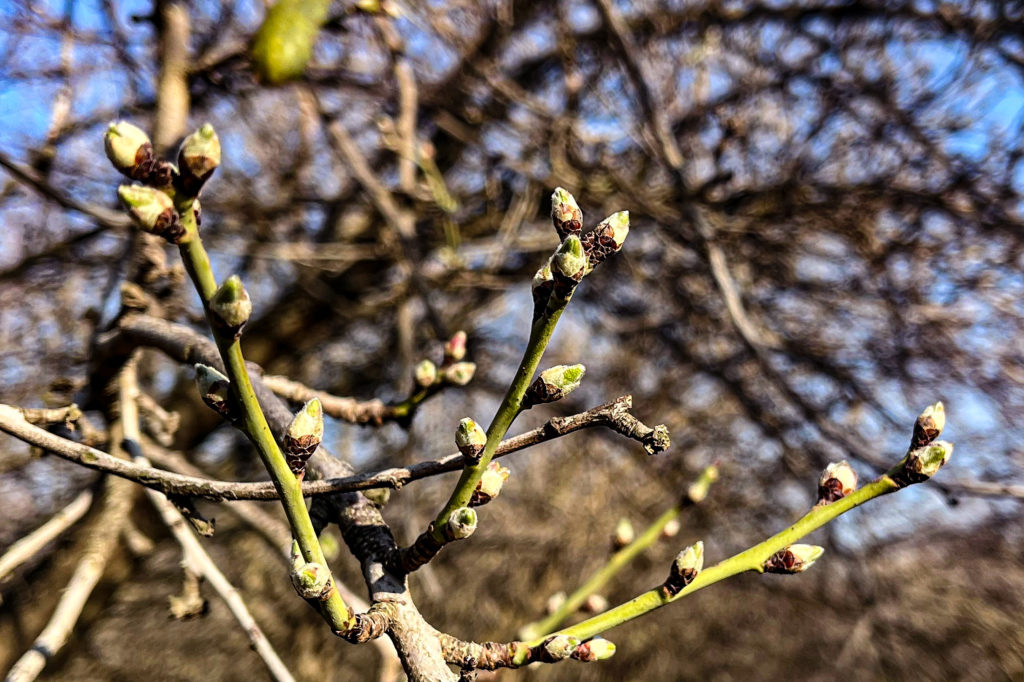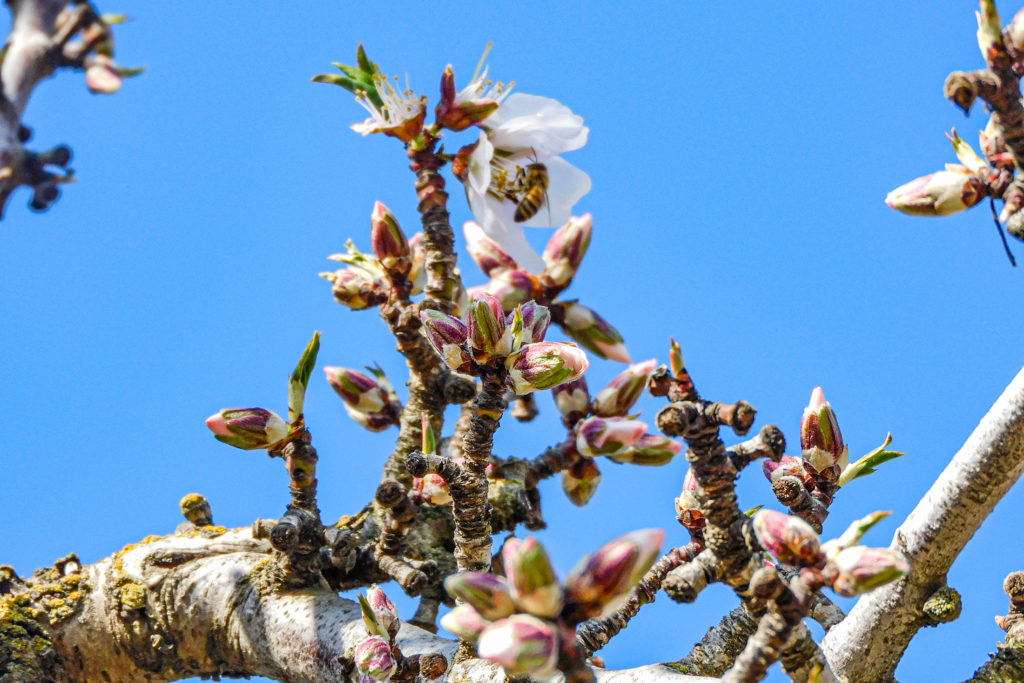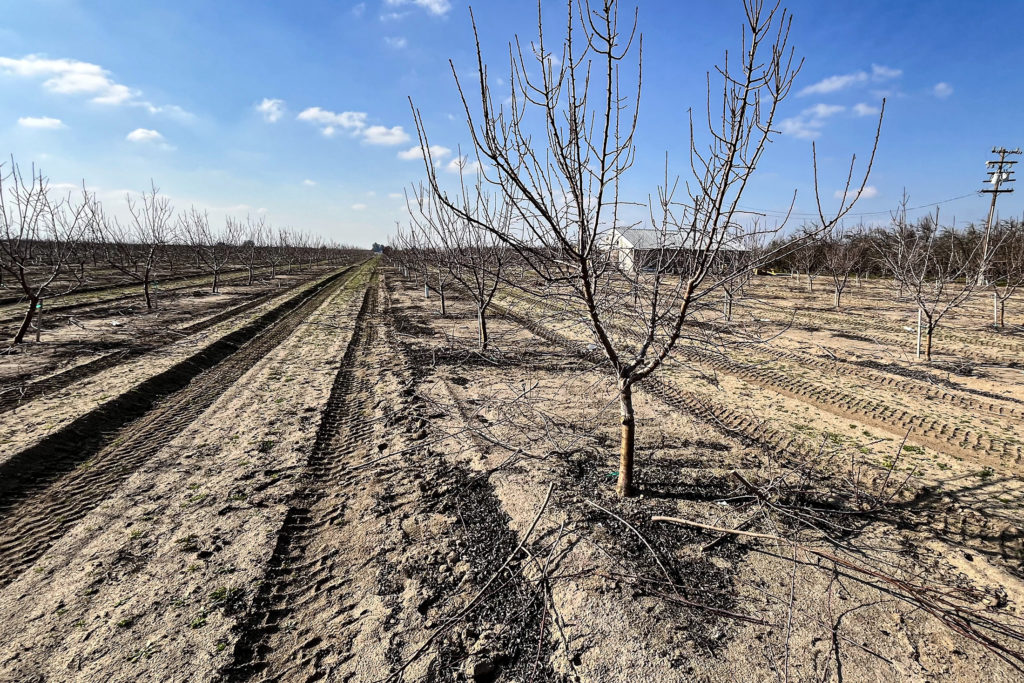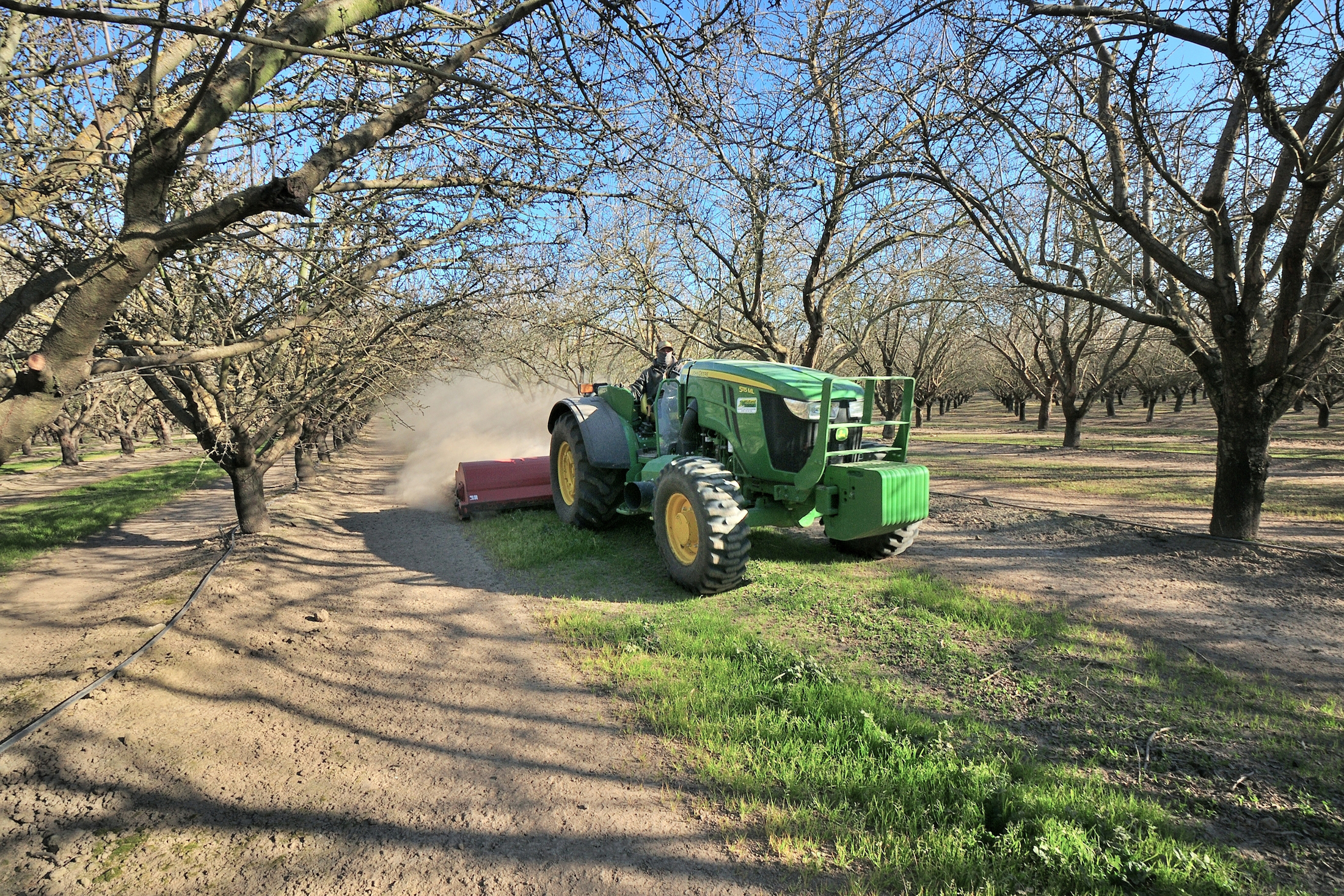
This report covers the conditions and activities observed prior to the start of the 2025 bloom. We anticipate starting regular weekly bloom reports during the week of February 9, 2025.
The winter of 2024/25 has proven to be bit confounding. Early season storms delivered significant rainfall to the Sacramento Valley, with some areas receiving as much as eight inches, setting daily rainfall records. The storms also deposited ample snow in the northern Sierra Nevada watershed, while leaving the southern Sierras in a deficit. As of the first of the year, snowpack levels in the northern Sierras were reported at 162% of normal for the date and 56% of the April 1 average. However, January has been quite dry, with less than one-half inch of rain reported throughout the Central Valley. (Most areas of the San Joaquin Valley have received less than three inches of rain for the season.) At the end of the January, snowpack in the northern Sierras has slipped to 89% of average for the date and 55% of the April 1 average. Meanwhile, the southern Sierra range is only at 47% and 29%, respectively.
As this report was being prepared, the first significant storms of the year were bearing down on the state, with the promise of heavy rain from two atmospheric river systems set to arrive in the first full week of the month. Fortunately, as a result of the previous year’s snowpack, reservoir levels are in reasonably good condition. As an example, Lake Shasta is a 118% of average for the end of January and 76% of capacity. New Melones reservoir is at 134% of average for the date and 78% of capacity. Hope remains strong for adequate water supplies for the 2025 growing season.
Growers turned to a more contemplative mindset following the completion of the 2024 harvest. The combined damage created by navel orangeworm (NOW) and plant bugs produced significant losses for many growers throughout the Central Valley. Analysis of the complete crop data shows that reject levels were second only to those recorded in the 2023 crop, which was the highest in decades.
Mummies, the nuts that are not removed from the trees during harvest serve as overwintering sites for NOW larvae. Research has proven that orchard sanitation, the removal and destruction of mummy nuts is the foundation of NOW management. The best sanitation typically targets leaving no more than one mummy per tree; less is better. However, sanitation remains sporadic within the landscape. Moisture from rain and fog greatly enhances sanitation by loosening the mummy’s attachment to the trees, increasing removal. Ironically, too much rain can leave orchard soils saturated and unable to support shakers. However, while the Central Valley has experienced more foggy mornings than in recent years, widespread day-long fog events have not occurred and the absence of rain during January has meant less than optimal conditions for mummy removal. As a result, quite a few orchards have not been sanitized.
The lack of sanitation, combined with low or minimal care orchards, is the result of poor economics that created significant NOW challenges in the 2024 crop as NOW moths moved into neighboring orchards. Stink bugs and leaf-footed plant bugs contributed to the damage, producing significant losses for many growers.
The dry January also created problematic conditions for growers who planted cover crops within their orchards. The flowers produced by cover crops provide significant support for the bees prior to and during the bloom. Growers who were able to irrigate their orchards after planting the seed have the best cover. Those relying on rainfall have had much less success, and even those that were irrigated have been impacted by the lack of rainfall.
Aside from sanitation, the dry conditions have helped growers complete other over-winter tasks. Weed control down the tree row or strip, pruning/training of younger orchards and older plantings to remove broken branches, and the shredding of the resulting brush has largely been completed. Orchard removal operations, followed by the spreading and incorporation of the resulting wood chips into the orchard soils has also been conducted. Growers are reporting that orchard soils remain quite dry and those with water available began irrigating during the latter half of January. Those sourcing their water from local irrigation districts will have to wait until deliveries are made available.
Observers are reporting that bud development is progressing well. Clear, dry skies during the latter half of January resulted in chilly morning low temperatures, dipping into the upper 20’s on the coldest mornings. However, the radiant heat from the clear skies and bright sun warms the trees, accelerating bud development. Observers are reporting that a few flowers can be found on advanced examples of the early blooming Sonora variety, mostly in stressed plantings or at the end of rows along roadsides. As may be seen in the photos accompanying this report, Nonpareil and Monterey are moving into the green tip stage, as is the self-fertile Independence. Depending on temperatures over the coming week, the first significant amount of bloom should become available for pollination during the week of February 9th.
Beekeepers began moving colonies into the state during December, staging hives in “bee yards” in the Central Valley near the orchards or in areas outside the valley where they may be able to find forage. Hives are now being moved into the orchards, a process that will continue for the next two weeks.
By Mel Machado, Vice President of Member Relations
Photos By: Austin Jackson, KC Clendenin, Carla Youngblood, Christine Ivory, Anthony Scudder and Mel Machado

